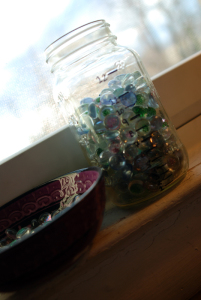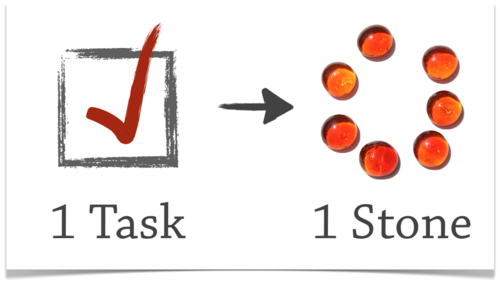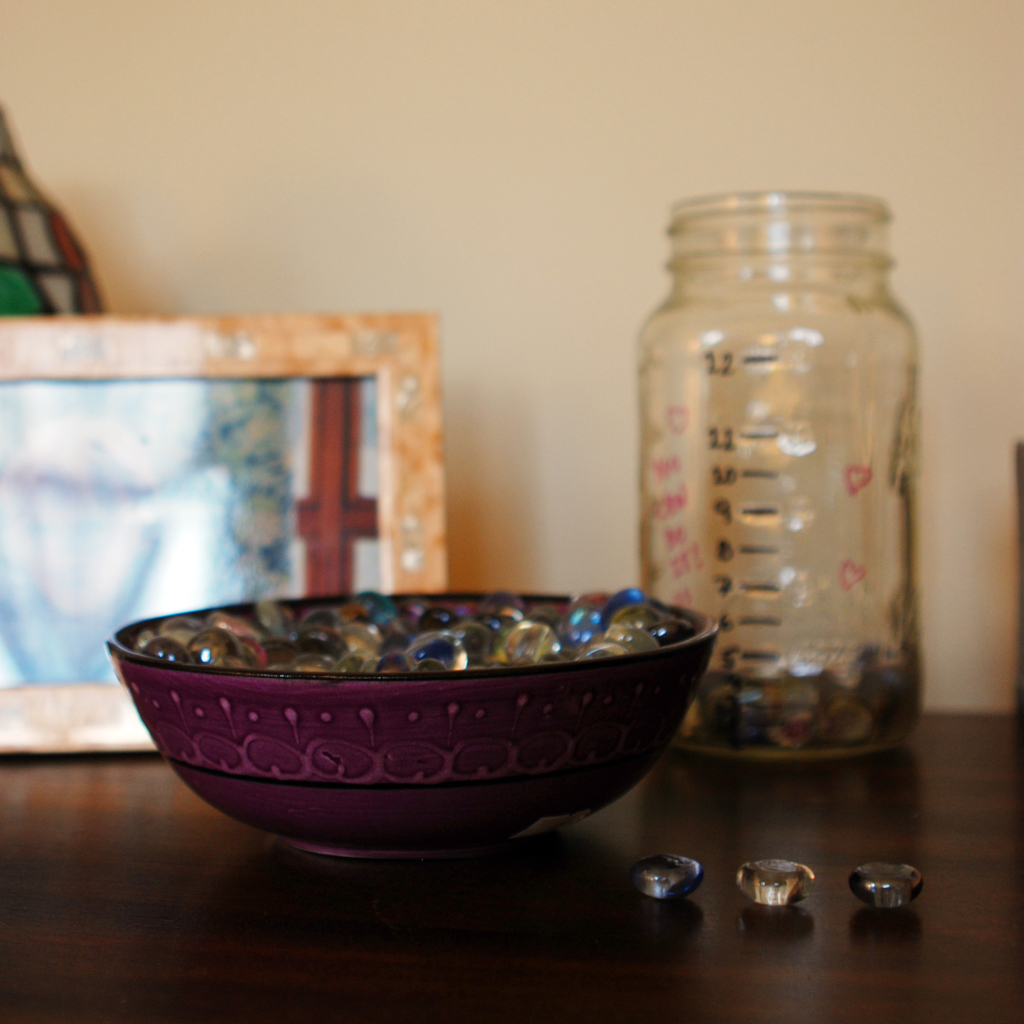 Here’s one for the gamers among us: a way to use your video game addiction for good, not for distraction and self-medication.
Here’s one for the gamers among us: a way to use your video game addiction for good, not for distraction and self-medication.
Several years ago, my friend Matt Agnello of Hungry Gamer wrote about a motivational system called One Task, One Stone.
One Task, One Stone (let’s call it OTOS for short) layers a leveling system (like those used in role-playing games) onto real-life situations. Has the number of hours logged on a World of Warcraft character or a Pokemon game ever made your jaw drop? You can harness that for real-world productivity.
The idea is simple. It requires a marker, a mason jar, and a few bags of glass stones. Draw lines on the side of the jar as shown. Number them however you like, but I enjoyed spacing the levels farther apart as I went up. This mimics the increase in XP required to gain successive levels in many role-playing games.
For each task completed, place a stone in the jar.
As you fill the jar with stones, you’ll “level up” at regular intervals. This capitalizes on our pre-existing relationship with games to maximize real-life productivity.

I recommend using this system to work toward a specific goal: decluttering your home, staying on top of chores, getting out of debt, learning a new skill, or starting a freelance career. Just make sure you award one stone for each discrete task, no matter how small.
Not only should you work toward a specific goal, you should identify a prize for reaching a target level. When I tested OTOS in my own life, I promised myself a new couch when I hit level 12 at the top of my jar.
My generation is the first to have grown up with gaming. The concept of progressing toward a goal by leveling up — and of receiving XP for successfully turning in a completed objective — is a natural concept for many adults under age 35.
OTOS inspired a huge, immediate shift in how much I got done and how many goals I achieved. Instead of gravitating toward the path of least resistance — ironically, often playing more video games — when I reached a stopping point on one activity, I found myself eager to identify a new to-do item so I could drop another stone in my jar.
I ended up getting my new couch, and it served as a tangible, prominent symbol of my personal victory.
I now use David Allen’s Getting Things Done system, which provides enough stimulation and motivation for me to stay on track most of the time. This is not true for everyone. If you’re looking for an extra push, and especially if you enjoy playing games, I highly recommend checking out Matt’s original post for more details on the concept and execution. He invites you to tweak it and expand on it, and so do I. Share your results, keep working toward that prize, and don’t forget to put recharging time on your to-do list!
Hey there! Are you enjoying The ADHD Homestead?
Here's the thing: I don't like ads. I don't want to sell your attention to an advertising service run by the world's biggest data mining company. I also value my integrity and my readers' trust above all, which means I accept very few sponsorships/partnerships.
So I'm asking for your support directly. For the cost of one cup of coffee, you can help keep this site unbiased and ad-free.
Below you will find two buttons. The first lets you join our crew of Patreon pals and pledge monthly support for my work. Patrons also have access to my Audioblogs podcast. The second takes you to a simple donation page to pledge one-time or recurring support for The ADHD Homestead, no frills, no strings. Do whichever feels best for you!


